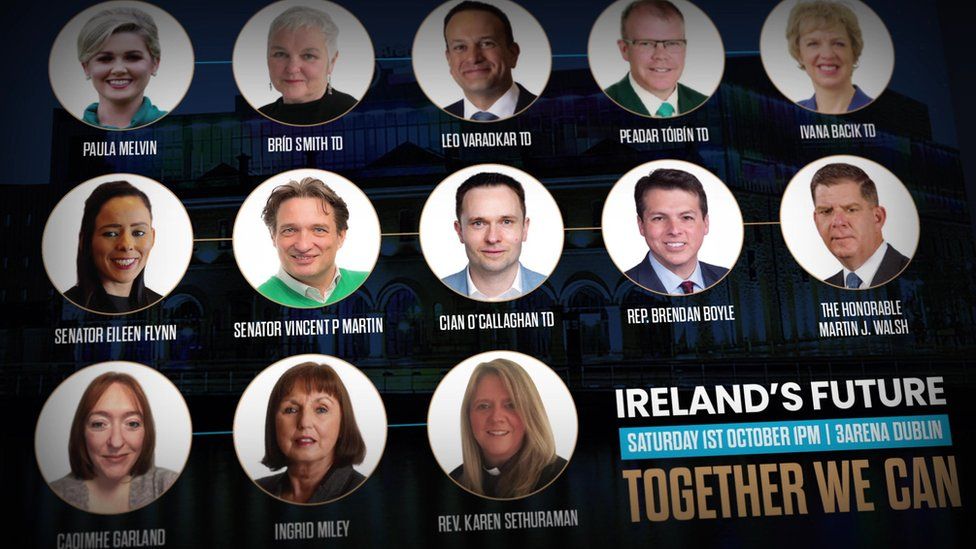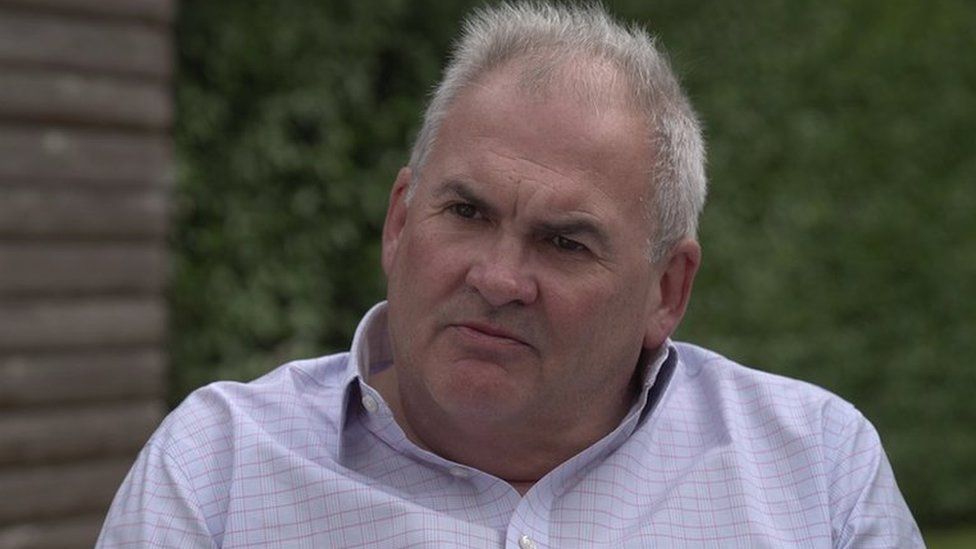Russia vetoes UN resolution on proclaimed annexations, China abstains
Fri, September 30, 2022
By Simon Lewis and Timothy Gardner
WASHINGTON, Sept 30 (Reuters) - Russia on Friday vetoed a UN Security Council resolution introduced by the United States and Albania condemning Moscow's proclaimed annexation of parts of Ukraine, with Russia's strategic partner China abstaining from the vote.
Earlier, Russian President Vladimir Putin proclaimed Russian rule over four regions that make up 15% of Ukraine's territory - the biggest annexation in Europe since World War Two. The move has been firmly rejected by Western countries and even many of Russia's close allies.
U.S. Ambassador to the U.N. Linda Thomas-Greenfield introduced the resolution that called on member states not to recognize any altered status of Ukraine and obliged Russia to withdraw its troops.
She argued in the council's chamber that the attempted annexation of a sovereign nation's territory went against the founding principles of the United Nations, and said Putin was celebrating "this clear violation of international law" with a concert held after he proclaimed the annexations on Friday.
Ten nations voted in favor, while China, Gabon, India and Brazil abstained.
"Not a single country voted with Russia. Not one," Thomas-Greenfield told reporters after the meeting, adding that the abstentions "clearly were not a defense of Russia."
Washington would turn to the 193-member U.N. General Assembly to condemn Russia's actions, she said.
"In the General Assembly, the nations of the world will say loud and clear: It is illegal, and simply unacceptable, to attempt to redraw another country’s borders through force," Thomas-Greenfield said.
ANNEXATIONS 'A FANTASY'
Russia has been trying to chip away at its international isolation after nearly three-quarters of the General Assembly voted to reprimand Moscow and demand it withdraw its troops within a week of its Feb. 24 invasion of neighboring Ukraine.
Russian ambassador to the UN Vassily Nebenzia, who raised his hand to give the only vote against the resolution, argued the regions, where Moscow has seized territory by force and where fighting still rages, chose to be part of Russia. Kyiv and Western leaders denounced the referendums as a sham.
"There will be no turning back as today's draft resolution would try to impose," Nebenzia said.
Ukrainian Ambassador to the United Nations Sergiy Kyslytsya said the single hand raised against the resolution "again testified to Russia's isolation and his desperate attempts to deny reality in our common commitments, starting from the UN charter."
Britain's envoy, Barbara Woodward, said Russia had "abused its veto to defend its illegal actions" but said the annexations had "no legal effect." "It is a fantasy," she added.
BEIJING UNCOMFORTABLE
China abstained from the resolution, but raised concerns about "a prolonged and expanded crisis" in Ukraine.
China has been firmly on the fence over the conflict, criticizing Western sanctions against Russia but stopping short of endorsing or assisting in the military campaign, despite the two nations declaring a "no-limits" strategic partnership in February. In a surprise acknowledgement, Russian President Vladimir Putin this month said China’s leader Xi Jinping had concerns about Ukraine.
Beijing's UN ambassador Zhang Jun argued that while "the sovereignty and territorial integrity of all countries should be safeguarded," countries' "legitimate security concerns" should also be taken seriously.
A U.S. official, who spoke on condition of anonymity, said China's abstention showed that Russia's "saber rattling" and moves that threatened states' territorial integrity put China in an "uncomfortable position."
"We don’t have China signing up for this much more aggressive agenda that Russia is trying to sell," the official said.
(Reporting by Simon Lewis and Timothy Gardner; additional reporting by Michael Martina; Editing by Franklin Paul, Jonathan Oatis and David Gregorio)
Russia vetoes UN resolution calling its referendums illegal


![]()
![]()
![]()
![]()
![]()
1 / 7
United Nations Security Council vote on a draft resolution sanctioning Russia's planned annexation of war occupied Ukraine territory, Friday Sept. 30, 2022 at U.N. headquarters. (AP Photo/Bebeto Matthews)
EDITH M. LEDERER
Fri, September 30, 2022
UNITED NATIONS (AP) — Russia vetoed a U.N. resolution Friday that would have condemned its referendums in four Ukrainian regions as illegal, declared them invalid and urged all countries not to recognize any annexation of the territory claimed by Moscow.
The vote in the 15-member Security Council was 10-1 with China, India, Brazil and Gabon abstaining.
The resolution would also have demanded an immediate halt to Russia’s “full-scale unlawful invasion of Ukraine” and the immediate and unconditional withdrawal of all its military forces from Ukraine.
U.S. Ambassador Linda Thomas-Greenfield said before the vote that in the event of a Russian veto, the U.S. and Albania who sponsored the resolution will take it to the 193-member General Assembly where there are no vetoes, “and show that the world is still on the side of sovereignty and protecting territorial integrity.”
That is likely to happen next week.
Britain's U.N. ambassador, Barbara Woodward, echoed Secretary-General Antonio Guterres' statement that Russia's actions violate the U.N. Charter and must be condemned.
“The area Russia is claiming to annex is more than 90,000 square kilometers," she said. “This is the largest forcible annexation of territory since the Second World War. There is no middle ground on this."
The council vote came hours after a lavish Kremlin ceremony where President Vladimir Putin signed treaties to annex the Russian-occupied Ukrainian regions of Luhansk, Donetsk, Kherson and Zaporizhzhia, saying they were now part of Russia and would be defended by Moscow.
Thomas-Greenfield said the results of the “sham” referendums on whether the regions wanted to join Russia were “pre-determined in Moscow, and everybody knows it.” “They were held behind the barrel of Russian guns,” she said.
Adding that “the sacred principles of sovereignty and territorial integrity” at the heart of the U.N. Charter must be defended, she said, “All of us understand the implications for our own borders, our own economies, and our own countries if these principles are tossed aside."
“Putin miscalculated the resolve of the Ukrainians,” Thomas-Greenfield said. “The Ukrainian people have demonstrated loud and clear: They will never accept being subjugated to Russian rule.”
Russian Ambassador Vassily Nebenzia defended the referendums, claiming that more than 100 international observers from Italy, Germany, Venezuela and Latvia who observed the voting recognized the outcomes as legitimate.
“The results of the referendums speak for themselves. The residents of these regions do not want to return to Ukraine. They have made a an informed and free choice in favor of our country,” he said.
Nebenzia added: “There will be no turning back as today’s draft resolution would try to impose.”
He accused Western nations on the council of “openly hostile actions,” saying they reached “a new low” by putting forward a resolution condemning a council member and forcing a Russian veto so they can “wax lyrical.”
Under a resolution adopted earlier this year, Russia must defend its veto before the General Assembly in the coming weeks.
Chinese Ambassador Zhang Jun said that “the sovereignty and territorial integrity of all countries should be safeguarded.” But China abstained, he said, because it believes the Security Council should be using trying to calm the crisis “rather than intensifying conflicts and exacerbating confrontation.”
Brazil’s ambassador, Ronaldo Costa Filho, said the referendums “cannot be perceived as legitimate” and his country stands by the principle of territorial integrity of sovereign states. But it abstained because the resolution didn't contribute to de-escalating tensions and finding “a solution for the conflict in Ukraine," he said.
India Abstains On UNSC Resolution Condemning Russia’s ‘Illegal Referenda’ In Ukraine
The 15-nation UN Security Council on Friday voted on the draft resolution tabled by the US and Albania that condemns Russia’s “organisation of illegal so-called referenda in regions within Ukraine’s internationally recognised borders.”Representational Image AP
UPDATED: 01 OCT 2022 7:29 AM
India has abstained on a draft resolution tabled in the UN Security Council which condemned Russia’s "illegal referenda" and annexation of four Ukrainian territories and called for an immediate cessation of violence while underlining the need to find pathways for a return to the negotiating table.
The 15-nation UN Security Council on Friday voted on the draft resolution tabled by the US and Albania that condemns Russia’s “organisation of illegal so-called referenda in regions within Ukraine’s internationally recognised borders.”
The resolution declares that Russia’s “unlawful actions” with regards to the “illegal so-called referenda” taken on September 23 to 27 this year in parts of Ukraine’s regions of Luhansk, Donetsk, Kherson, and Zaporizhzhya that are under Russia's temporary control can have "no validity" and cannot form the basis for any alteration of the status of these regions of Ukraine, including any “purported annexation” of any of these regions by Moscow.
The resolution failed to get adopted as Russia vetoed it. Of the 15-nation Council, 10 nations voted for the resolution while China, Gabon, India and Brazil abstained.
In the explanation of the vote, India’s Permanent Representative to the UN Ambassador Ruchira Kamboj said that India was deeply disturbed by the recent turn of developments in Ukraine and New Delhi has always advocated that no solution can ever arrive at the cost of human lives.
"We urge that all efforts are made by concerned sides for the immediate cessation of violence and hostilities. Dialogue is the only answer to settling differences and disputes, however daunting that may appear at this moment,” she said
“The path to peace requires us to keep all channels of diplomacy open,” she said, adding that Prime Minister Narendra Modi “unequivocally conveyed” this in his discussions with world leaders, including with Russian President Vladimir Putin and Ukrainian President Volodymyr Zelenskyy.
She also referred to statements made by External Affairs Minister S Jaishankar on Ukraine during the high-level General Assembly session last week.
India Not Being UNSC Permanent Member Not Good For UNSC, We Seek Fundamental Transformation: EAM Jaishankar

Biden Supports Germany, Japan, India As Permanent Members Of Reformed UNSC: White House Official

France Backs India’s Bid For Permanent Membership In Reformed UNSC, NSG

Referring to Modi’s remark to Putin on the sidelines of the SCO Summit in Uzbekistan's Samarkand that “today's era is not an era of war”, Kamboj said New Delhi sincerely hopes for an early resumption of peace talks to bring about an immediate ceasefire and resolution of the conflict.
“India's position has been clear and consistent from the very beginning of this conflict. The global order is anchored on the principles of the UN Charter, international law and respect for sovereignty and the territorial integrity of all states. Escalation of rhetoric or tension is in no one's interest,” she said.
“It is important that pathways are found for a return to the negotiating table. Keeping in view the totality of the evolving situation, India decided to abstain on the resolution,” Kamboj said.
Russian President Putin on Friday proclaimed the annexation of the Ukrainian regions of Donetsk, Luhansk, Kherson and Zaporizhzhia.
The announcement came a day after UN Secretary-General Antonio Guterres said that “any annexation of a State’s territory by another State resulting from the threat or use of force is a violation of the Principles of the UN Charter and international law.
“Any decision to proceed with the annexation of Donetsk, Luhansk, Kherson and Zaporizhzhia regions of Ukraine would have no legal value and deserves to be condemned,” Guterres said.
“It cannot be reconciled with the international legal framework. It stands against everything the international community is meant to stand for. It flouts the purposes and principles of the United Nations. It is a dangerous escalation. It has no place in the modern world. It must not be accepted,” the UN chief said.
The resolution also calls upon all States, international organisations and specialised agencies not to recognise any alteration of the status of Ukraine’s regions of Luhansk, Donetsk, Kherson or Zaporizhzhya on the basis of Russia’s “unlawful actions” with regards to the illegal so-called referenda taken on September 23 to 27, and to refrain from any action or dealing that might be interpreted as recognising any such altered status.
It also decides that Russia shall “immediately, completely and unconditionally” withdraw all of its military forces from the territory of Ukraine within its internationally recognised borders, which includes those regions addressed by the “illegal so-called referenda” to enable a peaceful resolution of the conflict between Russia and Ukraine through political dialogue, negotiation, mediation or other peaceful means.
 BBC SPORT
BBC SPORT



















